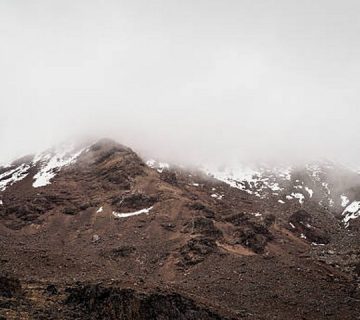How To Photograph Wildlife On Kilimanjaro
Welcome to the magnificent world of Mount Kilimanjaro, where the beauty of nature meets the thrill of adventure! Are you ready to capture the essence of one of Earth’s most awe-inspiring landscapes and its incredible wildlife? At Kilimanjaro Centre for Trekking and Ecotourism (KCTE), we’re excited to guide you through the essential tips and tricks on how to photograph wildlife during your climb on Kilimanjaro. Whether you’re a seasoned photographer or a curious enthusiast, this guide will help you preserve your Kilimanjaro experience through stunning images that breathe life.
Unveiling the Natural Splendor of Kilimanjaro
Mount Kilimanjaro isn’t just the highest peak in Africa; it’s a vibrant ecosystem teeming with exotic wildlife, breathtaking landscapes, and dynamic climates. From the dense rainforests at its base to the alpine desert and finally the icy summit, every altitude presents its unique set of flora and fauna. The opportunity to photograph this diversity in ecosystems and wildlife is unparalleled.
Gear Up: Essential Photography Equipment
Choosing Your Camera
To truly capture the splendor of Kilimanjaro, a good quality camera is essential. DSLR cameras are preferred for their versatility and high-quality output, but mirrorless cameras are also excellent for their lighter weight and compact size, crucial for trekking.
Lenses Matter
A versatile zoom lens (70-200mm or 100-400mm) can be invaluable on the mountain due to its flexibility. Wide-angle lenses (such as 16-35mm) are perfect for landscape shots, and a faster lens (f/2.8 or lower) will help in lower light conditions, especially in the rainforest zones.
Don’t Forget the Accessories
- Tripods: A lightweight, travel-friendly tripod can be crucial for stabilizing shots, especially in low light conditions.
- Extra batteries and memory cards: Cold conditions and heavy usage can drain batteries quickly. Always have extras on hand.
- Protective gear: Ensure your equipment is protected from moisture and dust with appropriate camera bags and lens cloths.
Techniques to Master Wildlife Photography on Kilimanjaro
Patience Pays Off
Wildlife photography requires patience. Animals are unpredictable, and capturing the perfect shot might mean waiting out the moment.
The Golden Hours
Utilize the early mornings and late afternoons, known as the "golden hours" for the best natural lighting. The soft, diffused light during these times will add a magical glow to your wildlife photos.
Focus on the Eyes
When photographing wildlife, focusing on the animal’s eyes creates a powerful, engaging photo. Ensure the eyes are sharp and well-lit to bring life to your image.
Composition is Key
Follow the rule of thirds to create more balanced and interesting shots. Place points of interest along the intersections of dividing the frame into thirds to help guide the viewer’s eye through the image.
Best Spots on Kilimanjaro for Wildlife Photography
The Rainforest Zone
The lush, dense rainforests of Kilimanjaro’s lower altitudes are teeming with life. Capture colorful birds, monkeys, and the elusive duikers.
The Heath and Moorland
This zone offers vast landscapes and is home to larger animals, including elands and buffaloes. The contrast between the open spaces and wildlife provides excellent photo opportunities.
The Alpine Desert
While wildlife is sparser here, the unique landscape itself provides dramatic backdrops for photography, especially with the giant lobelias and senecios standing sentinel over the terrain.
Ethical Wildlife Photography Practices
While photographing wildlife, it’s crucial to maintain respect for the natural environment and its inhabitants.
- Keep a Safe Distance: Always use your zoom lens to keep a safe distance from wildlife. Remember, your presence should not alter their natural behaviors.
- No Feeding: Feeding animals to capture a perfect shot is harmful and disrupts their natural foraging habits.
- Silence is Golden: Keep noise to a minimum to avoid distressing the wildlife.
Your Next Steps: Join Us at KCTE
At Kilimanjaro Centre for Trekking and Ecotourism (KCTE), we’re dedicated to providing you with an unforgettable Kilimanjaro experience, complete with professional guides who understand the importance of capturing those once-in-a-lifetime shots. Our tours are designed not only to challenge and exhilarate but to inspire and awe through the beauty of Kilimanjaro’s natural world.
Ready to put these tips into practice and embark on a photographic journey up Mount Kilimanjaro? Book your climb with KCTE today, and let us help you capture the heart and soul of Kilimanjaro!
FAQ
What is the best time of year to photograph wildlife on Kilimanjaro?
The best wildlife viewing is during the dry seasons, from late June to October and from late December to early March. This period offers clearer skies and easier trekking conditions.
Can beginners in photography take good wildlife photos on Kilimanjaro?
Absolutely! While having advanced equipment and skills can enhance your results, many beginners capture stunning photos using basic tips and an enthusiastic approach.
How can I ensure my safety while focusing on photography?
Always stay close to your guide and listen to their instructions. Safety on Kilimanjaro is about understanding the environment and respecting wildlife behavior.
Capture not just images, but experiences. Let Kilimanjaro touch your heart through your lens. Join us at KCTE, where adventures and memories await at the roof of Africa.




